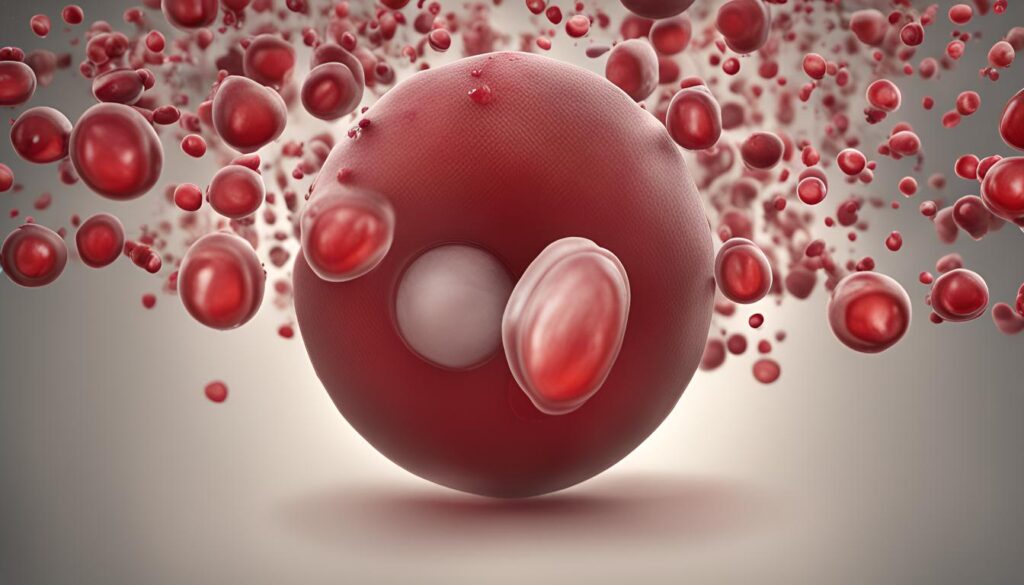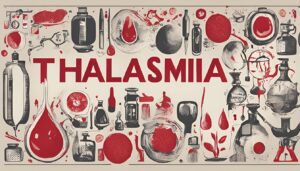What is Thalassemia?
A genetic blood condition called thalassemia affects the generation of hemoglobin. The blood’s ability to carry oxygen depends on hemoglobin. Less hemoglobin is produced by those who have thalassemia, which can result in anemia and other health problems. This illness is hereditary, which means that genes convey it from parents to offspring.
Signs and Symptoms
Fatigue and Weakness
The most prevalent symptom is persistent exhaustion. Due to low oxygen levels in their bodies, patients frequently feel weak and exhausted.
Pale Skin and Jaundice
A common indicator is pale skin. The quick decomposition of red blood cells can also result in jaundice, which is marked by yellowing of the skin and eyes.
Growth and Development Issues
Children who have thalassemia may not grow and develop as they should. This involves delayed puberty and smaller size.
Bone Deformities
Bone abnormalities may result from the illness, especially in the face and skull. The body’s attempt to create more red blood cells causes the bone marrow to expand, resulting in these abnormalities.
Splenomegaly
Another symptom is splenomegaly or an enlarged spleen. The spleen enlarges due to its increased effort in removing aberrant blood cells.
How to Manage Thalassemia
Regular Blood Transfusions
Blood transfusions are frequently necessary for patients to keep their hemoglobin levels at a healthy level. This therapy aids in symptom management and avoidance of problems.
Iron Chelation Therapy
Overexposure to iron in the body can result from repeated transfusions. Iron chelation treatment is necessary to get rid of this extra iron and shield the organs.
Bone Marrow Transplant
The only possible treatment is a bone marrow transplant. The patient’s bone marrow is replaced during this treatment with donor bone marrow that is in good condition.
Healthy Diet
Overall health is supported by a vitamin and mineral-rich, well-balanced diet. To aid in the production of healthy red blood cells, folate supplements may be advised.
Regular Medical Follow-ups
Healthcare providers must watch patients continuously. Frequent examinations assist in controlling symptoms and modifying therapy as necessary.
Preventing Thalassemia
Genetic Counseling
For couples who are at risk, genetic counseling is crucial. It aids in family planning and gives information about the dangers of thalassemia being passed on to offspring.
Prenatal Testing
Thalassemia in fetuses can be identified by prenatal testing. An early diagnosis enables more effective planning and handling.
Awareness and Education
It’s critical to spread knowledge about thalassemia. Education promotes genetic testing and counseling while also helping people comprehend the illness.
To sum up, thalassemia is a severe hereditary condition that needs to be managed for the rest of one’s life. The quality of life for individuals affected can be greatly enhanced by early detection and appropriate treatment. The keys to effectively controlling this condition include awareness, a healthy lifestyle, and routine medical care.
Living with Thalassemia

Emotional and Psychological Support
It might be difficult to have a chronic illness like thalassemia. Psychological and emotional assistance is essential. Counseling and joining support groups are recommended for patients and their families. Making connections with people who are aware of the illness can be consoling and a helpful resource for information.
Physical Activity and Exercise
Exercise regularly has advantages. While excessively demanding activities should be avoided by patients, moderate exercise can support the maintenance of general health and well-being. Before beginning a new workout program, always get medical advice.
Adherence to Treatment Plans
It’s crucial to follow recommended treatment strategies exactly. This includes adhering to dietary guidelines, scheduling all doctor’s appointments, and taking prescription drugs on time. Treatment regimen consistency aids in symptom management and avoids problems.
Research and Advances in Thalassemia Treatment
Gene Therapy
Gene therapy has made exciting advances that give patients with thalassemia hope. Scientists are investigating strategies to fix the genetic flaws underlying the illness. Promising findings from early trials could lessen the need for regular blood transfusions.
Improved Blood Transfusion Techniques
Advances in blood transfusion methods are improving the quality of care for patients. New techniques are being developed that are safer and more effective, reducing problems and enhancing patient quality of life.
New Medications
Treatments for thalassemia are being developed with new drugs. These medications are intended to lessen iron excess and boost the synthesis of healthy red blood cells. These therapies might provide better management choices as research continues.
Supporting Thalassemia Awareness
Community Involvement
Supporting thalassemia awareness requires active community involvement. Fundraising initiatives, educational initiatives, and local events can have a big influence. We can assist individuals impacted in getting the care and support they require by spreading awareness.
Advocacy and Policy Change
A policy shift that supports genetic counseling services, expands financing for research and enhances healthcare access. To improve the lives of people with thalassemia, advocacy is essential. Advocates try to sway
Donating Blood
One of the most straightforward methods to support thalassemia sufferers is through routine blood donation. Transfusions of blood are an essential component of their care. Giving blood can save lives by ensuring a consistent supply for people in need.
Conclusion
Thalassemia is a complicated, lifelong illness that needs all-encompassing care and assistance. Medical research is moving forward, and this gives us hope for better treatments and maybe even a cure. Support from the social, psychological, and emotional domains is as crucial for assisting patients in leading satisfying lives. We can enhance the lives of people with thalassemia and their families by promoting improved healthcare policy and increasing public knowledge of the disease.

